Philip Henry Delamotte and the Crystal Palace

The Great Exhibition took place in Hyde Park May from May to October 1851 as a celebration of modern international industrial technology and design and a means to demonstrate Britain’s position at the forefront of the modern world. The building which housed the exhibition, designed by Joseph Paxton, was quickly nicknamed ‘The Crystal Palace’ as it took the form of a massive iron framed glass house about 563 metres long by 138 metres wide. The exhibition was a great success and at its close the building was moved to a new park in Sydenham Hill, an affluent area of South London.
Philip Henry Delamotte
Philip Henry Delamotte (1821-89), a photographer and respected artist, was commissioned to photograph the move to Sydenham. Construction began in 1852 and was completed in two years with its official opening in June 1854 by Queen Victoria.
Delamotte’s photographs were published in several books and those in the exhibition were taken from 'Photographic Views of the Progress of the Crystal Palace Sydenham taken during the progress of the works, by desire of the directors 1855'. This is part of TLA’s library collection and comprises 160 images. The images are all available on the London Picture Archive.
Search the Delamotte Collection PhotographsThe images begin with the delivery of materials from Hyde Park and the beginning of work and continue with the recording of the piecing together of the structure. The interior is captured from the Roman courts to fighting leopards and workmen installing items including the completion of mosaics in The Byzantine Court.
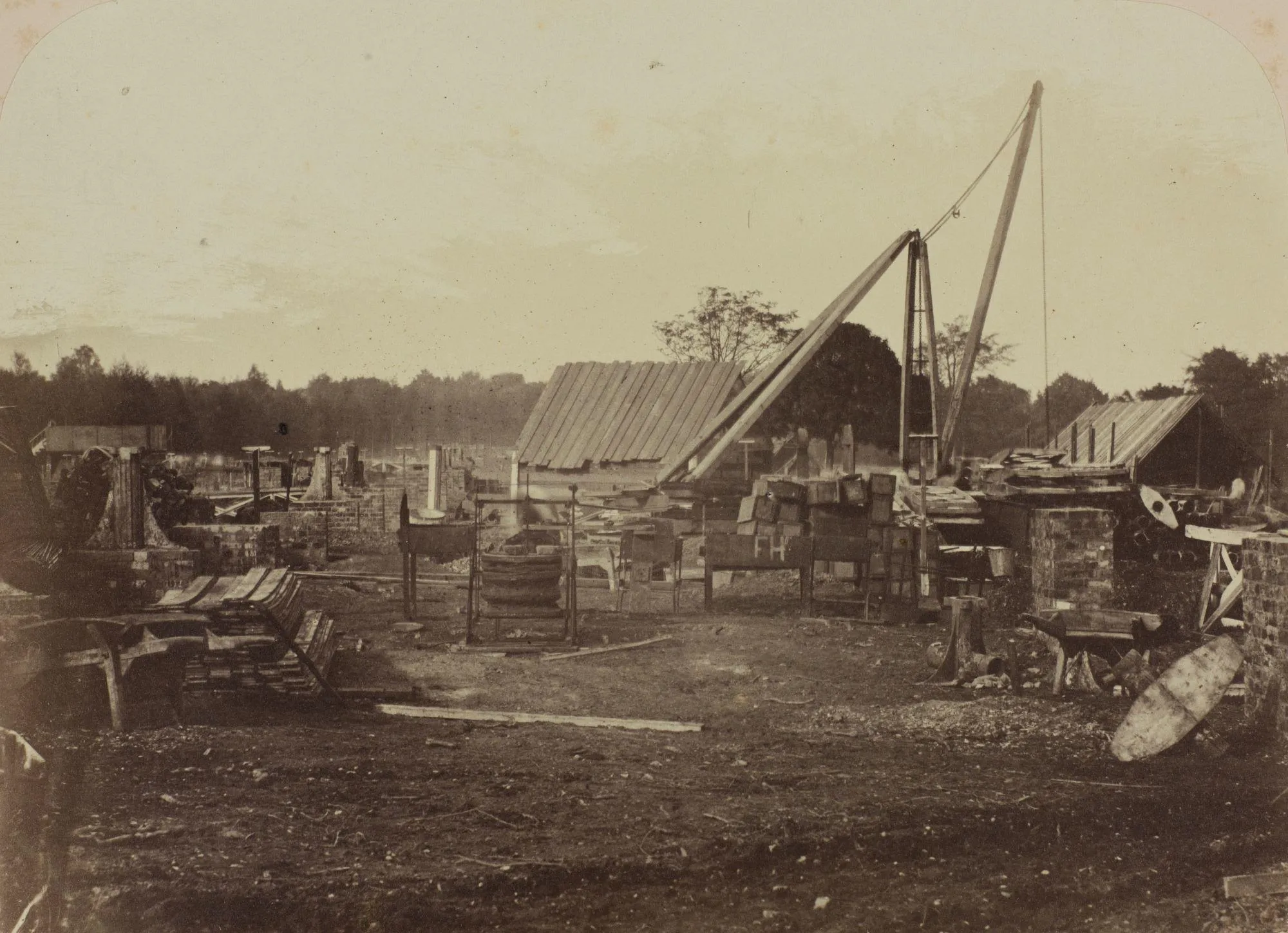
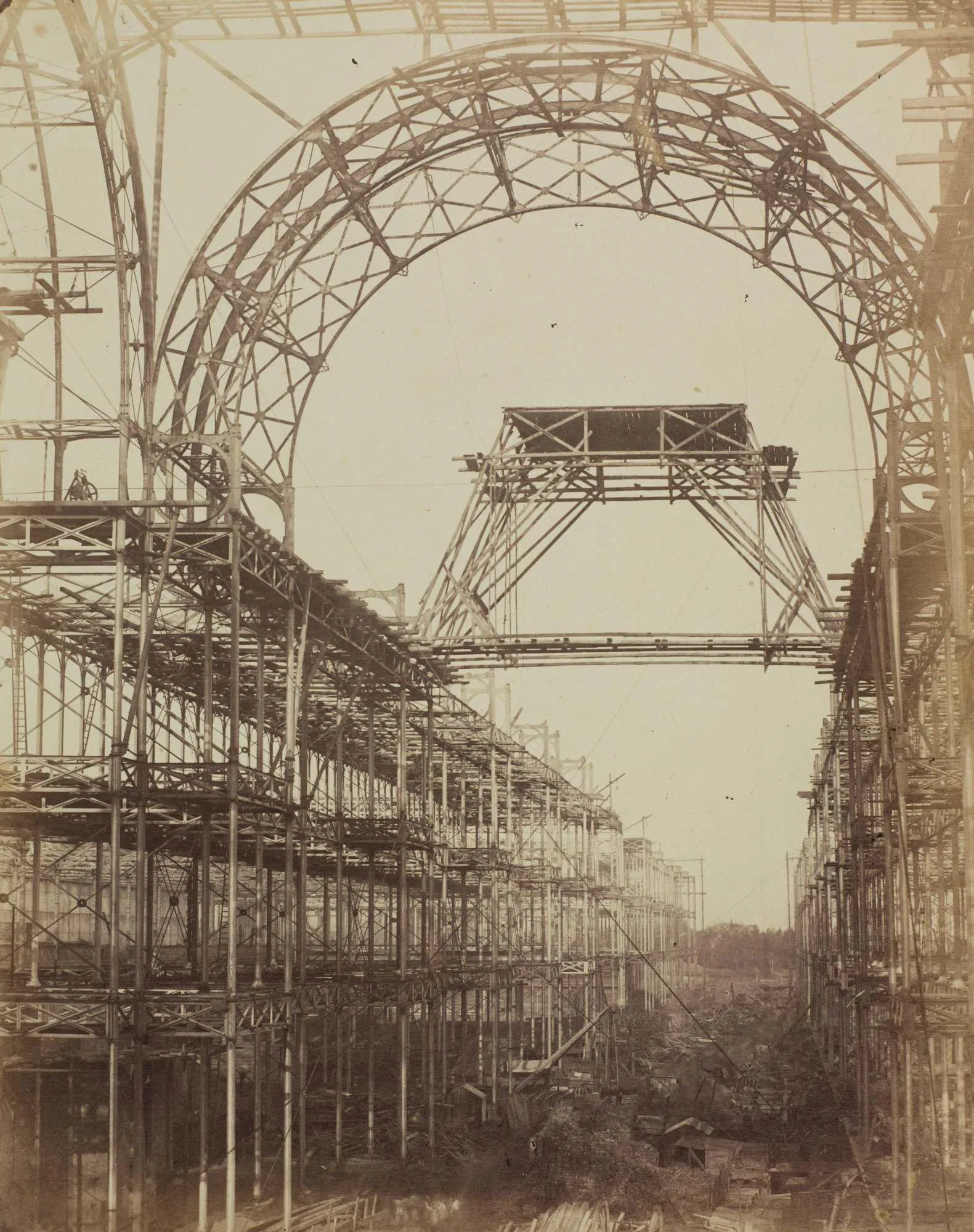
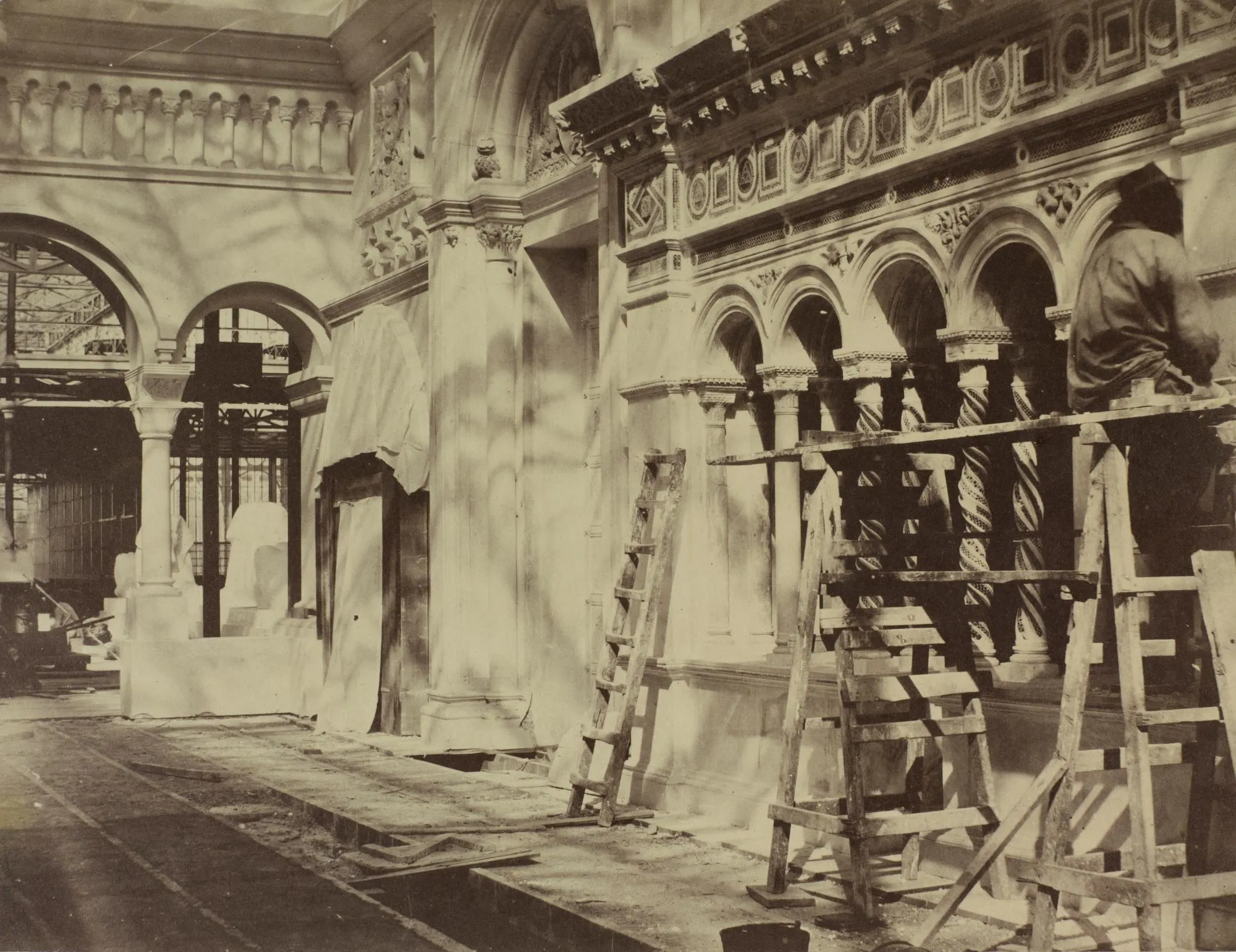
Delamotte’s recording of the workers and artisans working on the project and taking dinner is particularly compelling and he also records the ‘Crystal Palace dinosaurs’. These were the first ever life-sized models of extinct animals and some of these can still be seen in the park today.
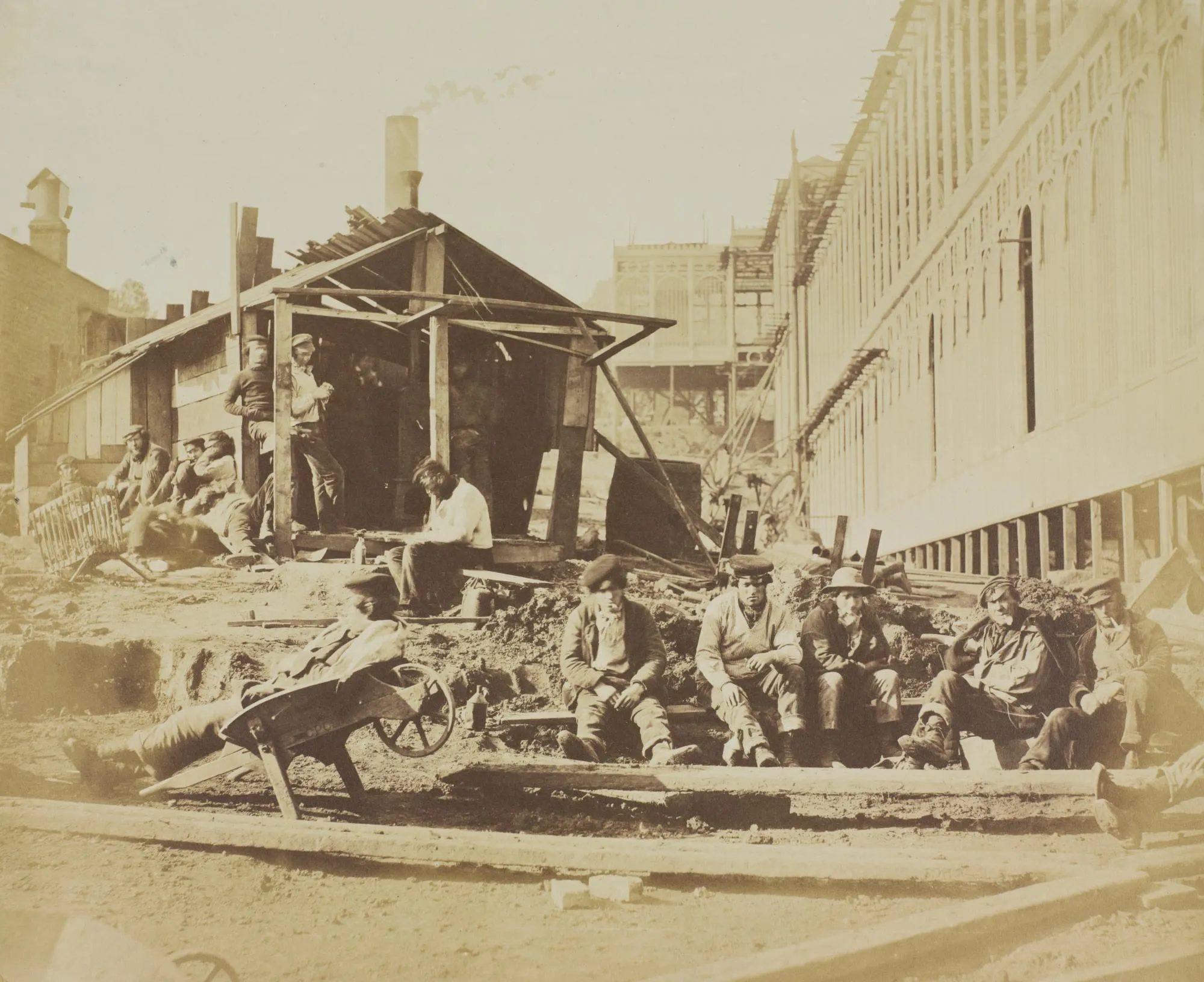
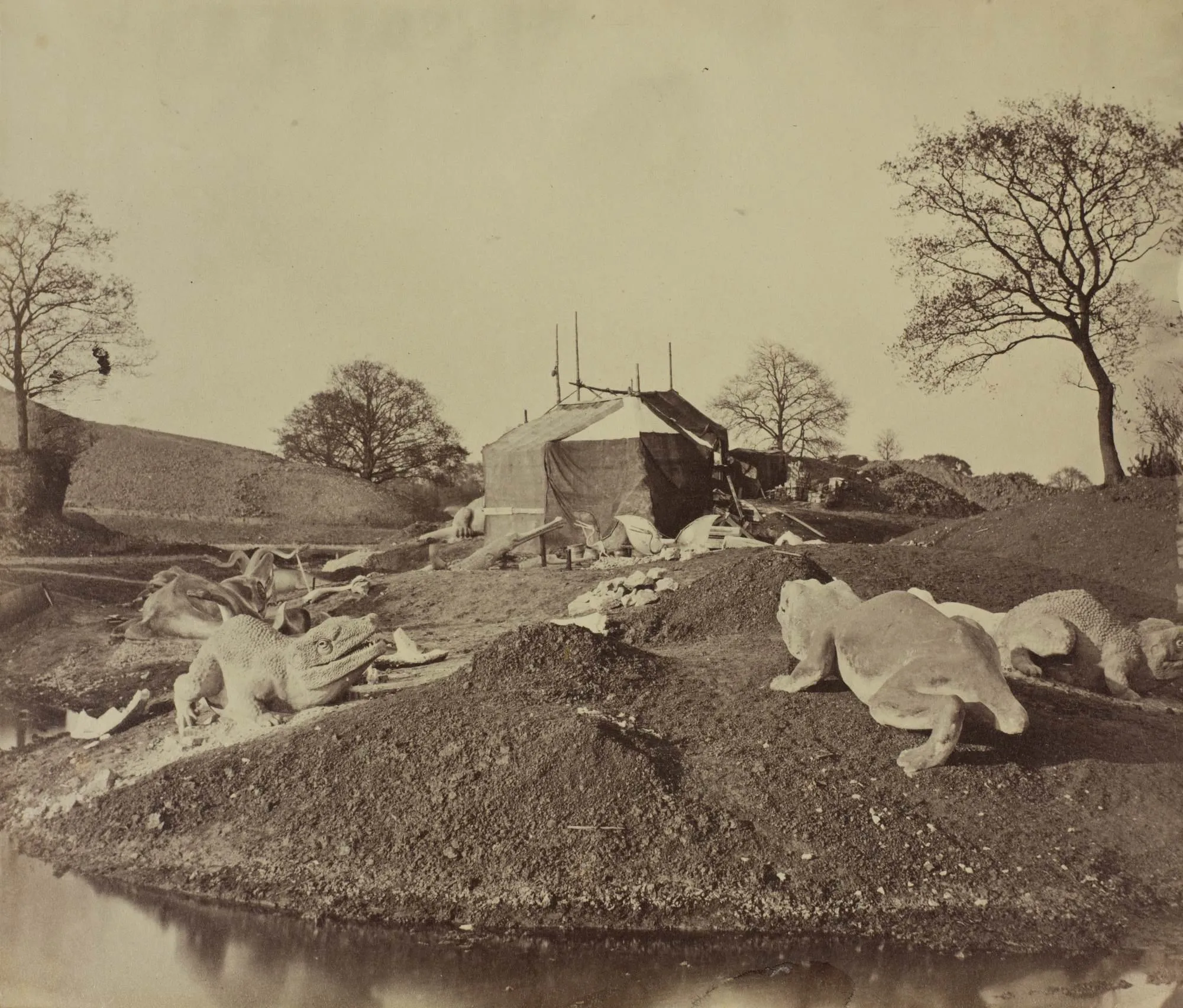
Crystal Palace remained a south London landmark until 30 November 1936 when disaster struck and it caught fire. Within hours it was reduced to rubble with only the two water towers left standing. However, Delamotte’s record survives to show the remarkable and pioneering structure that was the Crystal Palace.
Explore the Lost Victorian CitySearch the London Picture Archive